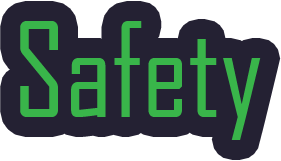Team:Tianjin/Safety/Question
From 2012.igem.org
| Line 70: | Line 70: | ||
<div id="secondpane"> <!--Code for menu starts here--> | <div id="secondpane"> <!--Code for menu starts here--> | ||
<div class="menu_head"> | <div class="menu_head"> | ||
| - | <a href="https://2012.igem.org/Team:Tianjin/Safety"></a> | + | <a href="https://2012.igem.org/Team:Tianjin/Safety">Safety Handbook</a></div> |
<p class="menu_head">In this page</p> | <p class="menu_head">In this page</p> | ||
<div class="menu_body"> | <div class="menu_body"> | ||
Revision as of 17:55, 24 September 2012

Question 1
1. Would any of your project ideas raise safety issues in terms of: researcher safety, public safety, or environmental safety?
The organisms we are using this year are Escherichia coli (Risk Group 1), Saccharomyces cerevisiae (Risk Group 1), and bacteriophage φX174, all of which are of limited dangers to team members and environment.
According to project plan, there will be no risks to team members, publics, and environment. Although the bacteriophage may posed certain risks on the E. coli of other research groups, we are extremely carefully with our experiment of bacteriophage to ensure an environment free of it. Furthermore, with our orthogonal system, we have produced bacteriophage that will not infect ordinary bacteria. In this way, we took a step further to ensure the safety of our laboratory.
Question 2
Do any of the new BioBrick parts (or devices) that you made this year raise any safety issues? If yes, did you document these issues in the Registry? how did you manage to handle the safety issue? How could other teams learn from your experience?
None of the new BioBrick parts or devices we made this year will raise any safety issues, because we use the orthogonal system to ensure the product being produced in a controlled and monitored environment, and all the product of the BioBrick are harmless to human and environment.
Question 3
Is there a local biosafety group, committee, or review board at your institution? If yes, what does your local biosafety group think about your project? If no, which specific biosafety rules or guidelines do you have to consider in your country?
We have a Peiyang Biological Control Committee that scrutinize our project looking for potential dangers and offered advice about laboratory facilities for a safer environment. This help us to ensure the biosafety of our project, and we are very pleased to have this committee's supervision on our plans.
Regarding this year's project, the committee acclaimed it as 'promising, secure and clean'. They agree with our philosophy about the orthogonal system, thinking it will be a prospect of a safer laboratory.
Question 4
Do you have any other ideas how to deal with safety issues that could be useful for future iGEM competitions? How could parts, devices and systems be made even safer through biosafety engineering?
Besides the conventional way of containing dangerous biohazard, we could work at the foundation to solve the problem completely. By modifying the Shine-Dalgarno (SD) sequence of the mRNA in E. coli and the 16S of the ribosome, we are able to construct an alternative translation system to prevent potential produce of dangerous produce. In this way, we can put plasmid producing harmful substances in the orthogonal system to carefully control and monitor its synthesis. We even went one step further to construct an orthogonal bacteriophage that have only the altered SD sequence and ribosome in its essential DNA fragment. This new phage will not propagate in normal cells, but only in our engineered orthogonal bacteria. Thus, we decreased the probability of phage infect other bacteria, protecting the laboratory environment, while engaged in innovative work with this NEW organism.
 "
"



















